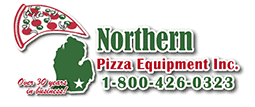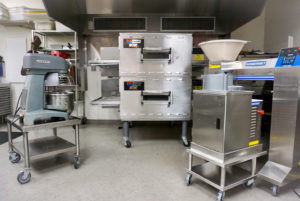As winter descends upon the regions, pizzeria owners face the dual challenge of battling the cold weather and managing energy consumption to keep operations running smoothly. In this blog, we delve into efficient energy practices tailored for running a pizzeria during the winter months, along with a spotlight on equipment designed to optimize energy use.
1. Smart Thermostats and Zoning: Embrace the power of smart thermostats and zoning systems to efficiently heat your pizzeria. These technologies enable you to tailor heating to specific areas, avoiding unnecessary energy consumption in less-utilized spaces during colder months.
2. Energy-Efficient Ovens: Upgrade to energy-efficient pizza ovens designed for cold climates. Look for models with advanced insulation and precise temperature controls, ensuring that the oven retains heat effectively. This not only reduces energy waste but also enhances the consistency and quality of your pizza.
3. LED Lighting Solutions: Illuminate your pizzeria with energy-efficient LED lighting. These lights not only consume less energy but also emit less heat, contributing to a more controlled kitchen environment. Consider motion-sensor lighting in less frequented areas to avoid unnecessary usage.
4. Programmable Equipment Timers: Implement programmable timers on various equipment, including dough mixers and proofing cabinets. This allows you to schedule equipment usage during peak times, optimizing energy consumption and reducing idle periods.
5. Regular Equipment Maintenance: Conduct regular maintenance on all your pizza equipment, especially during the winter. Well-maintained appliances run more efficiently, consuming less energy. Focus on cleaning heating elements, ensuring proper insulation, and addressing any issues promptly.
6. Energy-Efficient Refrigeration: Upgrade to energy-efficient refrigeration units with features such as improved insulation and automatic door-closing mechanisms. These upgrades not only save on energy costs but also contribute to maintaining optimal food storage temperatures in cold climates.
7. Employee Training on Energy Conservation: Empower your staff to contribute to energy conservation efforts. Implement training programs to raise awareness about the importance of turning off equipment when not in use, minimizing door openings on refrigerators, and other energy-saving practices.
8. Renewable Energy Options: Explore renewable energy options, such as solar panels or wind turbines, to partially power your pizzeria. While initial investments may be required, these solutions offer long-term sustainability benefits and reduce reliance on traditional energy sources.
By adopting these energy-efficient practices and incorporating equipment designed for cold climates, your pizzeria can not only navigate the challenges of winter but also contribute to a more sustainable and cost-effective operation. The result is not just a warmer kitchen but also a healthier bottom line.


